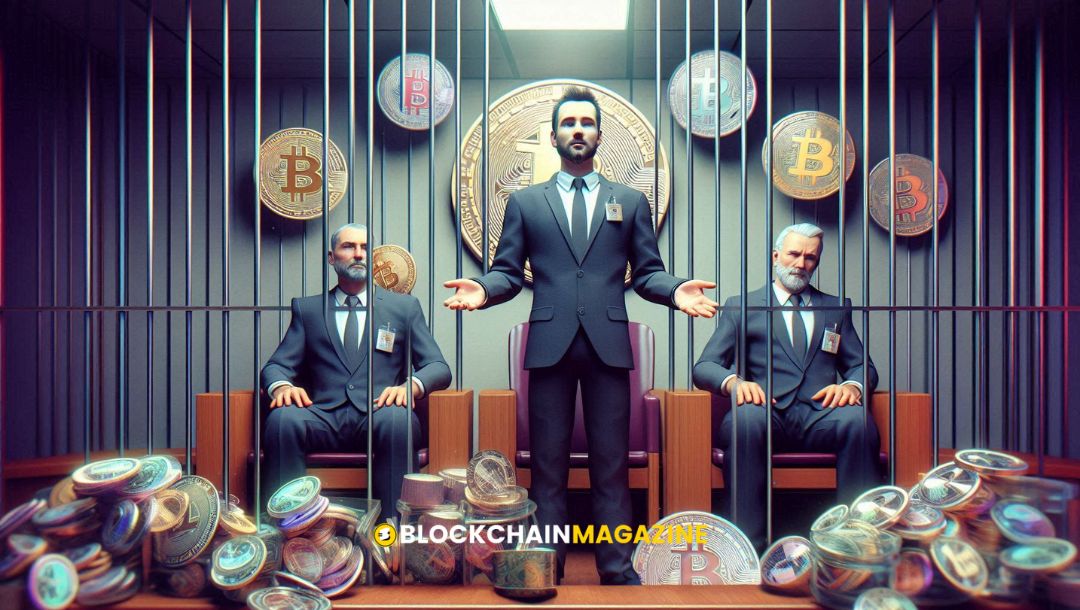What is Virtual Protocol? The Shopify of Ai Agents
So, what’s this Virtual Protocol thing all about? Imagine a platform that lets you create and own AI agents, kinda like how Shopify lets you set up your own online store. Virtual Protocol is doing just that for AI agents. It’s making waves in the AI world by using blockchain to turn these agents into digital assets that can be co-owned and even make money. This setup opens up new ways for people to interact with AI in games and other digital spaces. Let’s see what makes Virtual Protocol tick and why it’s catching everyone’s attention.
Key Takeaways
- Virtual Protocol is like Shopify but for AI agents, making it easy to create and own them.
- It uses blockchain to turn AI agents into digital assets, allowing for co-ownership and revenue generation.
- The platform includes tools for integrating AI into apps, even for those who aren’t AI experts.
- Governance is decentralized, with users voting on changes using a native coin.
- Virtual Protocol aims to make AI accessible and profitable for a wide audience.
Understanding Virtual Protocol and Its Impact on AI Agents
Virtual Protocol is making waves in the AI world, especially when it comes to integrating AI agents into new applications, enhancing the ecosystem’s revenue potential. These agents are becoming more productive and scalable, making them valuable assets for investors. Let’s explore how Virtual Protocol is transforming AI agents and the broader implications.
The Role of Blockchain in Virtual Protocol
Blockchain is at the heart of Virtual Protocol, providing a secure and transparent framework for AI agents. By using blockchain, Virtual Protocol ensures that each agent is tokenized, allowing for co-ownership and revenue-sharing. This not only democratizes access to AI technology but also aligns incentives for developers and users alike.
How Virtual Protocol Transforms AI Agents
Virtual Protocol changes the game for AI agents by making them more accessible and functional. These agents are not just static programs; they can plan, communicate, and interact within their environments. Imagine an AI in a game that can pick up items, trade assets, or even engage in complex decision-making on the fly. That’s the power of Virtual Protocol.
Key Features of Virtual Protocol
- Tokenization and Co-Ownership: AI agents can be owned by multiple parties, allowing for shared benefits and responsibilities.
- Revenue Sharing: Contributors and developers earn a share of the profits generated by AI agents.
- Decentralized Governance: Decisions about the protocol are made collectively, ensuring transparency and fairness.
Virtual Protocol is like the Shopify of AI agents, providing a platform where anyone can deploy and manage AI technology with ease. It’s a game-changer for developers and businesses looking to integrate AI into their operations.
The Architecture of Virtual Protocol
The architecture of Virtual Protocol is like a sophisticated machine, built with components that work together to create a seamless experience for AI agents. It’s not just about the tech; it’s about how everything fits together to make something greater than the sum of its parts.
Smart Contracts and Token Standards
Smart contracts are the backbone of Virtual Protocol. They automate processes, making transactions efficient and transparent. The protocol uses Ethereum-compatible smart contracts, which include co-ownership rights and revenue-sharing agreements. These contracts are based on ERC-721 and ERC-1155 token standards, ensuring each virtual agent is a unique digital asset.
- ERC-721: Used for unique, non-fungible tokens.
- ERC-1155: Allows for both fungible and non-fungible tokens within the same contract.
- Co-ownership rights: Multiple stakeholders can own a piece of a virtual agent.
AI Development Toolkit and Integration
The AI development toolkit is like a Swiss Army knife for developers. It includes APIs and SDKs that allow for easy integration of pre-trained AI models into different applications. This toolkit is designed to be user-friendly, even for those without deep machine learning expertise.
- Plug-and-play functionality: Developers can implement AI systems without extensive knowledge.
- Low-latency interactions: Ensures real-time responsiveness in gaming or virtual environments.
- Supports various AI models: From basic to complex, adaptable to different needs.
Cross-Chain Compatibility
Cross-chain compatibility is a big deal for Virtual Protocol. It allows the protocol to interact with different blockchain ecosystems, improving scalability and reducing transaction costs. This means Virtual Protocol isn’t stuck in one place; it can move and adapt as needed.
- Cross-chain bridges: Enable communication with other decentralized apps (dApps).
- Supports Layer-2 solutions: Enhances scalability and lowers costs.
- Broad accessibility: Ensures the protocol can be used across various platforms.
Virtual Protocol’s architecture is like a well-oiled machine, designed to handle the complexities of AI and blockchain integration with ease. By utilizing smart contracts, a robust AI toolkit, and cross-chain compatibility, it creates a flexible and scalable environment for AI agents to thrive.
The architecture isn’t just about technology; it’s about creating a platform that can grow and adapt, much like the Modular Consensus Framework it operates on, making it an ideal choice for the evolving landscape of AI and decentralized applications.
Virtual Agents: Revolutionizing Interaction in Digital Spaces
Virtual agents are changing the way we interact with digital environments. They’re more than just fancy chatbots; these agents can learn, plan, and make decisions all on their own. Imagine a game where your virtual buddy not only remembers your last adventure but also suggests new quests based on your past choices. That’s the magic of autonomous learning and decision-making. They can navigate 3D spaces, interact with users in real-time, and handle complex tasks like financial transactions using blockchain.
Applications in Gaming and Entertainment
In the world of gaming, virtual agents are like having a personal guide who knows your gaming style. They can be NPCs in games like Roblox or even virtual idols in apps like Telegram. They’re not just about playing a role; they can remember your interactions across platforms, making each experience unique. This adaptability is a game-changer for developers looking to enhance user engagement. Imagine a virtual agent that can simulate your favorite celebrity or character, making your gaming experience more immersive.
The Future of Virtual Agents
Looking ahead, virtual agents are set to become even more integrated into our digital lives. They’re poised to revolutionize customer service, making interactions more personalized and efficient. As they continue to evolve, these agents will likely become more autonomous, handling tasks we haven’t even thought of yet. The potential for virtual agents in digital spaces is vast, and we’re just scratching the surface of what’s possible.
Virtual agents are the bridge between human creativity and digital efficiency, opening new avenues for interaction and innovation.
These agents are not just tools; they’re partners in our digital journey, ready to transform how we interact with technology.
Governance and Decentralization in Virtual Protocol
On-Chain Governance Processes
Virtual Protocol is all about giving power to its users through on-chain governance. This means that decisions about the platform are not made behind closed doors but are open to everyone involved. Token holders have a say in how things are run, which keeps everything fair and open. They can propose changes and vote on different aspects of the protocol. This system is built on smart contracts, which ensure that everything is done automatically and without interference.
Role of Native Utility Coin
The native utility coin is a big deal in the Virtual Protocol ecosystem. It’s not just a currency but a tool for governance. By staking their coins, users can participate in voting and decision-making processes. This gives them a direct role in shaping the protocol’s future. Also, the coin is used to reward users who contribute to the network, like providing computing power or developing AI models.
Ensuring Transparency and Security
Transparency and security are at the heart of The Virtuals Protocol. The platform underwent a thorough audit to identify potential risks and address them head-on. This audit revealed some issues, but the team took immediate action to fix them, demonstrating a commitment to maintaining a secure environment for all users. By transitioning administrative privileges to a DAO-like structure, the protocol minimizes risks and enhances trust among its participants. This approach ensures that every transaction and decision is visible and verifiable, fostering a secure and reliable ecosystem.
Economic Opportunities Within the Virtual Protocol Ecosystem
The Virtual Protocol ecosystem is buzzing with economic potential, offering various avenues for financial growth and innovation. Let’s dive into the opportunities it presents:
Revenue-Sharing Models
One of the standout features of Virtual Protocol is its revenue-sharing models. These models allow developers and creators to earn a share of the revenue generated by their AI agents. This setup encourages innovation and offers a sustainable income stream. Here’s how it works:
- Direct Revenue Sharing: Developers earn a percentage of the income from their creations, whether it’s through in-app purchases, subscriptions, or other monetized interactions.
- Collaborative Projects: By teaming up with other creators, individuals can partake in shared revenues, promoting a collaborative environment.
- Performance-Based Earnings: The more successful an AI agent is in terms of engagement, the higher the earnings for its creator.
Tokenized Ownership and Co-Ownership
Virtual Protocol introduces a novel concept of tokenized ownership, where users can own a piece of an AI agent. This not only democratizes access but also creates a sense of investment among users. Imagine owning a share in a virtual influencer or a game character, and earning from its success.
- Fractional Ownership: Users can buy tokens representing a fraction of an AI agent, allowing for shared ownership and benefits.
- Marketplace for Tokens: A dedicated marketplace where users can buy and sell their ownership tokens, offering liquidity and flexibility.
- Co-Ownership Opportunities: Collaborate with others to co-own AI agents, spreading the investment risk while sharing the rewards.
Incentives for Developers and Contributors
To keep the ecosystem thriving, Virtual Protocol offers various incentives for developers and contributors. This not only attracts talent but also ensures continuous growth and innovation.
- Developer Grants: Financial support for developers to create and improve AI agents, fostering a culture of innovation.
- Contribution Rewards: Contributors who help enhance the platform, whether through code, feedback, or other means, receive rewards in the form of tokens.
- Community Challenges: Regular challenges and competitions that incentivize developers to push the boundaries of what’s possible with AI agents.
The Virtual Protocol ecosystem is a playground for economic innovation, offering diverse opportunities for creators, investors, and users alike. By embracing a decentralized approach, it not only fuels growth but also empowers individuals to take part in the digital economy.
In summary, Virtual Protocol is not just about technology; it’s about creating a vibrant economic system where everyone has a chance to participate and benefit. Whether through revenue-sharing, tokenized ownership, or developer incentives, the opportunities are vast and varied.
Challenges and Solutions in Implementing Virtual Protocol
Implementing Virtual Protocol isn’t as straightforward as it seems. Here are some of the hurdles and how they can be tackled.
Simplifying AI Agent Deployment
Deploying AI agents can be a real headache. The process is often complex, involving various technical steps that can be daunting for developers. Virtual Protocol addresses this by offering a plug-and-play solution, much like Shopify does for online stores. This means developers can integrate AI agents into their applications without needing deep technical expertise.
Ensuring Fair Compensation for Contributors
One major challenge is making sure everyone gets paid fairly. In traditional setups, contributors often miss out on revenue. Virtual Protocol’s Immutable Contribution Vaults change this by recording all contributions on-chain. This ensures that contributors are recognized and compensated based on their input, fostering a fairer ecosystem.
Lowering Barriers for Non-Experts
Not everyone is a tech wizard, and that shouldn’t stop people from participating. Virtual Protocol’s Initial Agent Offering allows for the tokenization and decentralized co-ownership of AI agents. This opens up opportunities for non-experts to get involved in the AI space, making it more inclusive and accessible.
Implementing Virtual Protocol is about breaking down barriers—technical, financial, and participatory—to create a more inclusive and efficient ecosystem for AI agents.
Comparing Virtual Protocol with Other AI and Blockchain Platforms
Unique Selling Points of Virtual Protocol
Virtual Protocol stands out with its focus on AI agents, particularly in games and entertainment. Unlike other platforms, it offers tokenized co-ownership of AI agents, allowing users to directly influence and benefit from their creation and commercialization. This approach transforms users from passive participants to active contributors.
- Co-Ownership: Users can co-own AI agents, which is a unique feature that promotes active participation.
- Transparency: Blockchain-based transparency ensures all interactions and ownership rights are secure.
- Plug-and-Play AI Solutions: Simplifies interaction with complex AI models, lowering barriers for developers and end users.
Competitive Landscape Analysis
In the competitive landscape, Virtual Protocol differentiates itself by prioritizing decentralization and governance through its native coin. This gives users transparency and control, which is often lacking in other platforms. Competitors like Oraichain focus on AI models for blockchain infrastructure, while ai16z targets media and entertainment applications.
| Platform | Focus Area | Unique Feature |
|---|---|---|
| Virtual Protocol | AI Agents in Games and Entertainment | Tokenized Co-Ownership |
| Oraichain | AI Model for Blockchain Infrastructure | AI Model Creation |
| ai16z | Media and Entertainment Applications | Lacks Direct User Incentives |
By combining targeted marketing and strategic relationships within gaming and metaverse ecosystems, Virtual Protocol scales effectively in a competitive market. Its emphasis on specialty supremacy, user engagement, and ease of adoption gives it a significant edge.
Advantages Over Competitors
Virtual Protocol’s go-to-market strategy capitalizes on its expertise in AI-powered games and virtual interactions. Unlike broader platforms such as the Artificial Superintelligence Alliance, Virtual Protocol stresses AI agent co-ownership, encouraging direct user participation and community-driven evolution.
- Specialized Approach: Focuses on a specific demand in gaming and digital interaction, setting it apart from broader platforms.
- Community-Driven Evolution: Encourages user participation in the development and evolution of AI agents.
- Strategic Partnerships: Engages with gaming and metaverse ecosystems to enhance its presence and scalability.
In November, Virtual Protocol significantly boosted the AI agent token market, launching over 21,000 tokens and achieving a market capitalization surpassing $1.8 billion. This remarkable growth underscores its competitive advantage and market readiness.
Wrapping Up: The Future of Virtual Protocol
So, there you have it. Virtual Protocol is like the Shopify for AI agents, making it super easy for anyone to get involved in the AI game. Whether you’re a developer or just someone curious about AI, this platform opens up a world of possibilities. With its plug-and-play approach, you don’t need to be a tech wizard to create or manage AI agents. Plus, the whole idea of co-owning these digital assets is pretty cool, right? It’s like owning a piece of the future. As AI continues to grow and evolve, platforms like Virtual Protocol are paving the way for more people to participate and benefit. It’s an exciting time to be part of this tech revolution. Who knows what we’ll see next?
Frequently Asked Questions
What exactly is Virtual Protocol?
Virtual Protocol is like a toolkit that helps people make and manage smart AI helpers called Virtual Agents. It uses blockchain technology to make these agents unique digital items that people can share and own together.
How does Virtual Protocol use blockchain?
It uses special computer programs called smart contracts to keep track of who owns what and how money is shared. This makes working together easy and fair.
What are Virtual Agents?
Virtual Agents are smart computer programs that can talk, move, and do tasks in digital worlds. They can work in games and apps, making them more fun and interactive.
How can someone make money with Virtual Protocol?
People can earn money by creating or improving Virtual Agents. When these agents are used, the creators get a share of the money through a system that tracks everything on the blockchain.
Is it hard to use Virtual Protocol?
No, it’s designed to be easy, like using a simple app. Even people who aren’t tech experts can use it to create and manage Virtual Agents.
What makes Virtual Protocol different from other platforms?
It stands out because it lets people own and earn from AI agents easily. It also works well with different blockchain systems, making it very flexible.
Stay informed with daily updates from Blockchain Magazine on Google News. Click here to follow us and mark as favorite: [Blockchain Magazine on Google News].
Get Blockchain Insights In Inbox
Stay ahead of the curve with expert analysis and market updates.
latest from tech
Disclaimer: Any post shared by a third-party agency are sponsored and Blockchain Magazine has no views on any such posts. The views and opinions expressed in this post are those of the clients and do not necessarily reflect the official policy or position of Blockchain Magazine. The information provided in this post is for informational purposes only and should not be considered as financial, investment, or professional advice. Blockchain Magazine does not endorse or promote any specific products, services, or companies mentioned in this posts. Readers are encouraged to conduct their own research and consult with a qualified professional before making any financial decisions.

 Bitcoin
Bitcoin  Ethereum
Ethereum  Tether
Tether  XRP
XRP  Solana
Solana  Dogecoin
Dogecoin  USDC
USDC  Cardano
Cardano  Lido Staked Ether
Lido Staked Ether  TRON
TRON  Avalanche
Avalanche  Sui
Sui  Wrapped stETH
Wrapped stETH  Chainlink
Chainlink  Toncoin
Toncoin  Stellar
Stellar  Shiba Inu
Shiba Inu  Wrapped Bitcoin
Wrapped Bitcoin  Hedera
Hedera  Polkadot
Polkadot  WETH
WETH  Bitcoin Cash
Bitcoin Cash  LEO Token
LEO Token  Uniswap
Uniswap  Pepe
Pepe  Litecoin
Litecoin  Hyperliquid
Hyperliquid  Wrapped eETH
Wrapped eETH  NEAR Protocol
NEAR Protocol  Ethena USDe
Ethena USDe  USDS
USDS  Aptos
Aptos  Internet Computer
Internet Computer  Aave
Aave  Mantle
Mantle  Render
Render  Cronos
Cronos  POL (ex-MATIC)
POL (ex-MATIC)  Bittensor
Bittensor  Ethereum Classic
Ethereum Classic  MANTRA
MANTRA  WhiteBIT Coin
WhiteBIT Coin  Virtuals Protocol
Virtuals Protocol  Artificial Superintelligence Alliance
Artificial Superintelligence Alliance  Tokenize Xchange
Tokenize Xchange  Monero
Monero  Dai
Dai 



